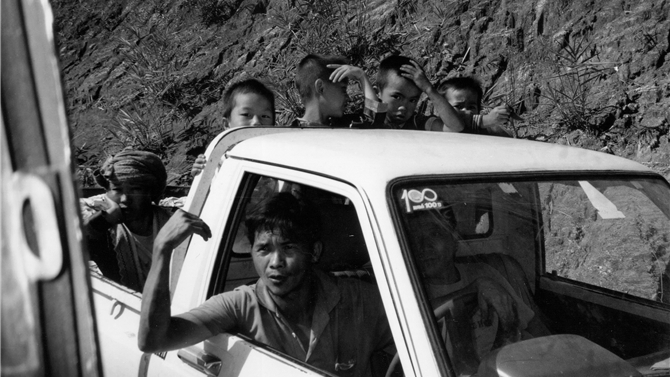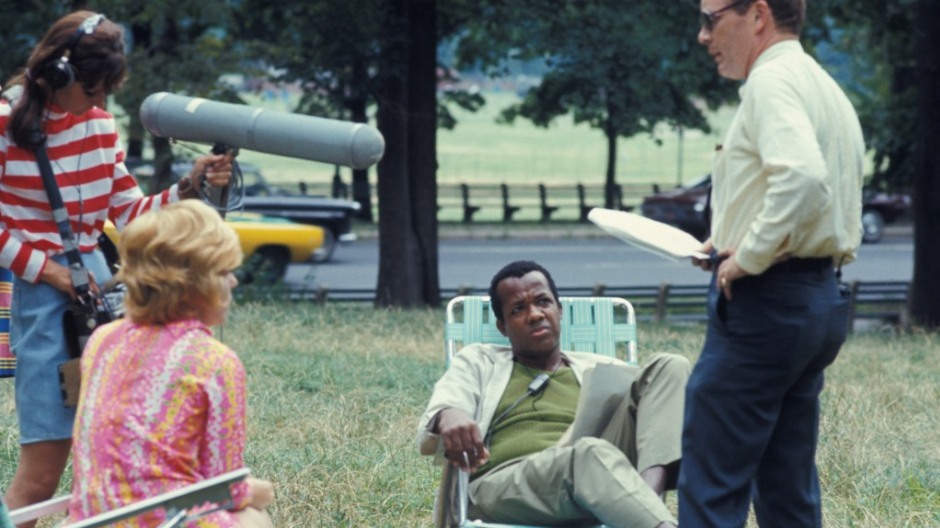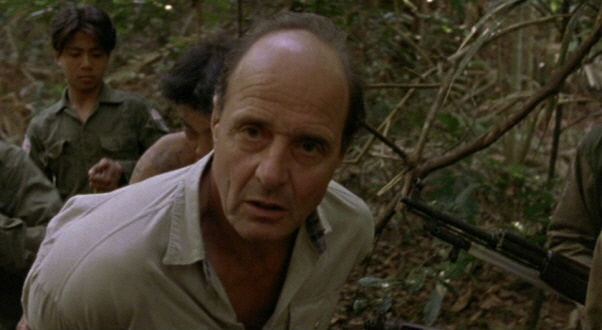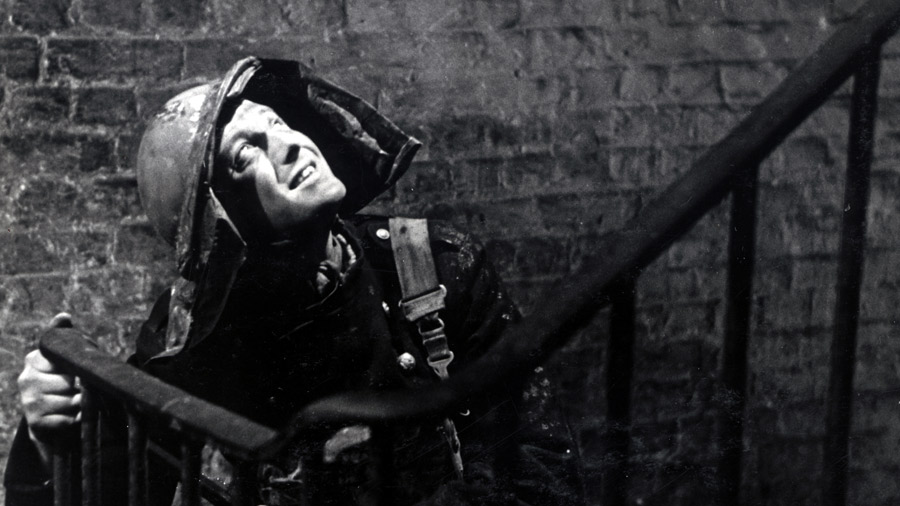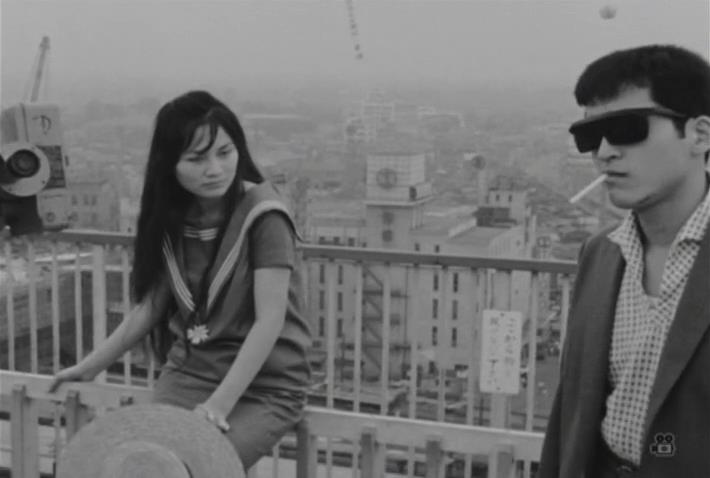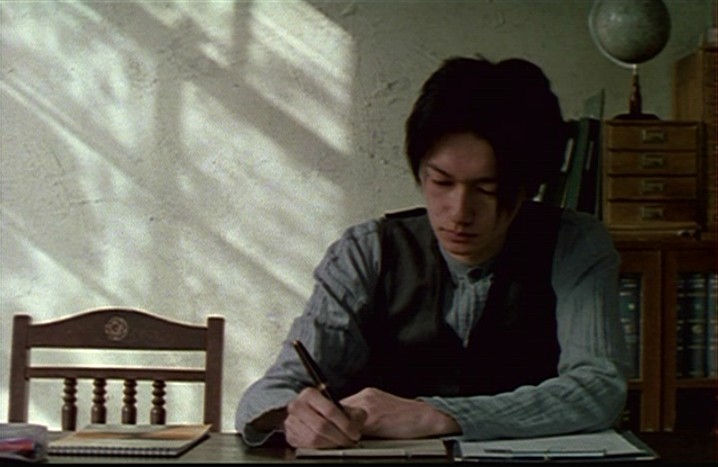14. Mysterious Object at Noon (Apichatpong Weerasethakul, 2000)
“Mysterious Object at Noon” was the first feature by Thai filmmaker Apichatpong Weerasethakul and consists of him travelling around the rural areas of Thailand asking people he encountered to continue a made up story.
This documentary works like a game of Exquisite Corpse. Also known as ‘rotating corpse’, an exquisite corpse is a method of collecting several words or images from different contributors and assembling them together. Each person adds to the arrangement in a particular sequence.I guess Chinese Whispers is probably the most well-known version of this.
The film was obviously more of an experiment and resulted in an effective exploration of the human imagination. As you watch each person contribute to the plot, you soon realise the overall story is no longer of importance.It is that little bit of themselves each storytellers adds that stays with you.
The film is not about the made up story, but the personalities and essence of those telling it.
15. Symbiopsychotaxiplasm (William Greaves, 1968)
Symbiopsychotaxiplasm is an experimental docu-dramaby African-American film director William Greaves. The film presents itself as a cinéma vérité documentary and tries to capture a sense of authenticity that is unconstrained by the presence of cameras.
It’s quite tricky summing up the film in a few sentences because there are so many layers going on at once. The film supervises a group of camera/sound men in New York, leaving them to try and work out what exactly it is they’re meant to be making.
The title comes from the term “symbiotaxiplasm”, meaning human-involved events that produce interconnected influences on their environment.
It is another example of metatextuality in cinema, the film is principally a documentary, within a documentary; within a documentary (it’s not as confusing as it sounds,promise).
16. Little Dieter Needs to Fly (Werner Herzog, 1997)
Originally produced for German TV, the film follows a German-American naval pilot (Dieter) who served in the Vietnam War. He returns to the locations of where he was captured by the Vietcong and re-enacts particular events.
Herzog has never made his embellishments or stylisations within his documentaries secret;to the contrary, he is proud of them.
The most famous scene in Little Dieter Needs To Fly is the ‘open door’ monologue.This was when Dieter delves into the philosophical reasons why he purchased so many paintings of open doors. According to Herzog it was all contrived, in reality Dieter brought the paintings because they were cheap. It was left in the film because his story and the way it was told, captured a side of Dieter’s personality that is difficult to convey traditionally. This is what Herzog calls ‘the ecstatic truth’.
17. Fires Were Started (Humphrey Jennings, 1943)
Humphrey Jennings was renowned for his poetically driven documentaries about the living conditions of the working class during WWII.
The film could almost be seen as an evaluation of all the things Jennings had learned about the British working class from his previous films.The nuances and comradeship that is evident in his earlier work is dramatized into a cohesive narrative, showing a naturalistic and heavily poetised portrait of the daily life of the firefighters.
Fires were started is said by certain film scholars to be as important to British cinema, as Jean Vigo’s L’Atalante was to France’s.
18. Bad Boys (Susumu Hani, 1961)
Bad Boys is set in a real juvenile prison, using real adolescent delinquents,and is considered by many historians to be the film that lunched the Japanese New Wave.
Director Susumu Hani came from a documentary background and this somewhat explains why so many documentary techniques are used in this film.This includes using contributors from his previous documentaries who make up most of the supporting characters.
The prisoners, who are actual convicted delinquents,reminisce over real parts of their lives and the events that led to their downfalls. The protagonist, who is fictional, acts as the vehicle that transports us through this very real world.
19. … No Lies (Mitchell Block, 1973)
No Lies is a short film directed by American Filmmaker Michael Block.Most people studying documentary at college would have likely had this film shown to them, and quite possibly it was the cause of a heated debate.
Mimicing the style of cinéma vérité; the film observes through the perspective of a student filmmaker,a young woman who has been raped, and gradually dissects the effects of her trauma.
When the film ends it is finally revealed to us that both the filmmaker and rape victim were actors, and the whole sequence was a manufactured. This realisation often shocks audiences, primarily because the mind bogglingly organic performances and natural character development is so convincing. Despite being fictitious, No Lies is shown to police officers, therapists and nurses, as a window into the complex implications of a rape victim’s psyche.
20. Afterlife (Hirokazu Koreeda, 1998)
The film is set in a way station where the souls of recently deceased people are interviewed before entering heaven. They are each asked what their single happiest memory is, and are then made to re-experience it for eternity.
This is another film that is sure to cause objections regarding its validity as a documentary; but if we can call Nanook of the north and Three Songs for Lenin documentaries, then surely Hirokazu Koreeda’s Afterlife is no exception?
After Life presents itself as a documentary in a world that almost certainly doesn’t exist, and achieves so much more sincerity than even the most traditional news report.
Prior to the production, Koreeda interviewed 500 people from all over Japan about their happiest memories;some of these are actually used in the final film alongside the scripted interviews. By fusing documentary conventions with fictional narrative, we gain an understanding of the subjective nature of memory, and how the distortions of them can be more revealing than the actual moments themselves. François Truffaut once said “I have always preferred the reflection of life, to the life itself.”
Author Bio: Matthew E Carter is a British world cinema blogger and part of a filmmaking collective called Black Country Cinema. His work usually focuses on documentary and East Asian cinema; primarily Taiwanese, Japanese, Chinese and Cantonese.
